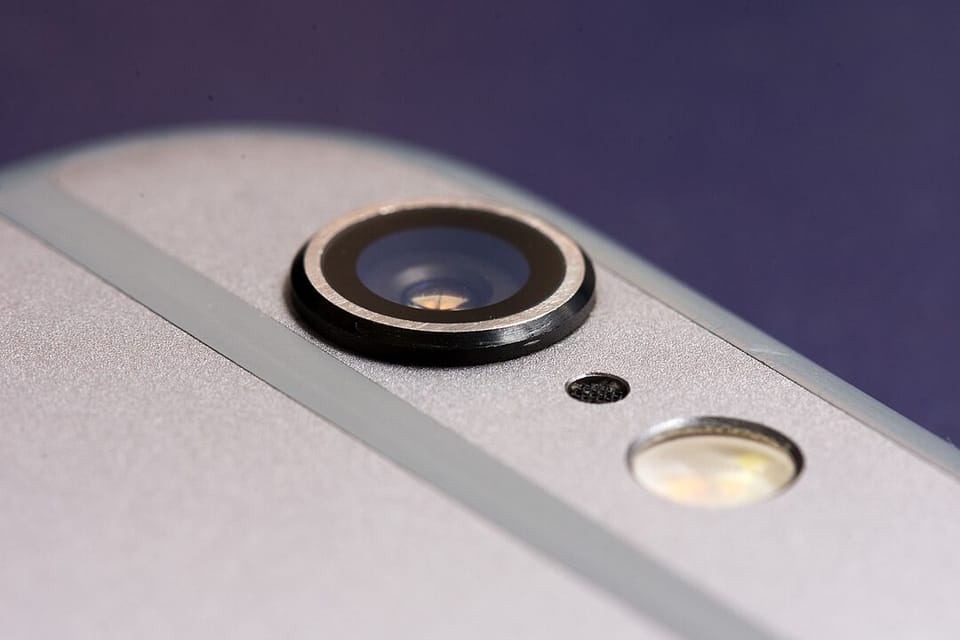iPhone 6 Plus for when even a MacBook Air is too big

There are times when even the lightest, slimmest laptop is more than you want to carry. And times when there’s not enough room to use a MacBook Air. That’s when an iPhone 6 Plus is useful.
Earlier this month I tried to work with my 13-inch MacBook Air while flying in economy class. Although the tray-table had room for the computer, there wasn’t enough space to type.
Break out the iPhone 6 Plus
I’ve been using the iPhone 6 Plus for six months now. It’s a good size for two thumb typing. The text shows large enough to check your work, although that depends on the writing app you use at the time. Best of all, the screen shows enough words for you to understand the context of what you are writing.
The iPhone 6 Plus is the best writing tool that fits in a pocket. I’ve used it to edit, update or finish off news stories while traveling on Auckland buses and ferries or sitting in cafes. This was the first time, other than artificial review-style tests, when I needed to write long-form journalism on the phone.
Normally I find the iPhone 6 Plus is fine for emails, admin and short bursts of text, but prefer something with a physical keyboard for longer writing jobs.
There were deadlines to worry about so I decided to push the technology beyond my comfort zone. I wrote a lengthy feature, two news stories and two detailed article outlines during the flight.
Plenty of good iOS writing apps
There’s no shortage of iOS writing tools to choose from. I had five loaded on the phone. So I took the opportunity to try them all.
All my iOS writing apps have clean user interfaces and all work with OS X as well. That last point is important.
Byword is the cleanest, perhaps that’s why it is my favourite. I find the simplicity is well suited to iPhone two thumb typing. It uses Markdown to embed codes like bold or headline levels in what is otherwise plain text. Best of all Byword documents are easy to read while you are editing.
Microsoft Word and Apple’s Pages iOS app performed just as well in the cramped conditions. It’s good to know serious productivity is possible in such circumstances.
Sideways scrolling with Google Docs
Google Docs didn’t do as well. It’s clean and straightforward, but I couldn’t discover how to restrict the page width on the phone, so found myself continually scrolling right to left and back again.
Maybe that’s avoidable. Sitting on a plane isn’t the best place to learn how to use unfamiliar software.
iA Writer is an old favourite that didn’t fare well as expected in my enforced iPhone writing test. Although the software works fine, I found the typewriter-like font it uses is difficult to read on the small screen.
Thumbs up to iPhone 6 Plus writing in an emergency
To my surprise I managed to write more than 1500 words with my thumbs during the journey. There was barely any physical discomfort, despite writing in such cramped conditions.
The onscreen keyboard wasn’t a problem. In practice I found using the keyboard in the portrait position, that’s holding the phone upright, worked far better. When you tip the iPhone 6 Plus on its side there’s a bigger onscreen keyboard with more keys, It was harder to use and took up too much of the display to be practical.
The biggest annoyance was constantly switching between the working document and reference notes.
When I got to my hotel thanks to the magic of Bluetooth, Continuity, WiFi and iCloud my iPhone output was available on my MacBook almost immediately. Microsoft’s OneDrive was the laggard at synching. It took minutes while iCloud and Google Docs took seconds.
Error prone after MacBook Air
Some of the work looked just fine. However, I noticed a couple of plane-written documents were riddled with typos and other errors. This has always been my experience with iPhones, they cope well with simple writing, but the small screen makes them imperfect tools for proofreading. I make a lot more errors than when I type on my MacBook Air keyboard.
The Google Docs document was in worst shape. I put that down to the horizontal scrolling problem. That made checking my work on the go next to impossible.
Lesson: iPhone writing works, not ideal
Overall I was happy with the experience. Battery life wasn’t an issue, there were no ergonomic headaches, the device worked well in the circumstances. About an hour into the experiment I wondered if an external Bluetooth keyboard would help my productivity. An hour later I was convinced that wouldn’t solve anything and would undermine the usefulness of a writing device that fits in a pocket.
I didn’t get as much done as I might have done with the MacBook Air. But I got far more done that if I read a magazine or watched in-flight movies.
Better still, I managed to hit the deadlines. That wouldn’t have been possible without the iPhone 6 Plus. I estimate I worked at about three-quarters my normal speed, allow a bit more for the extra corrections needed and that’s still a productive flight.
Member discussion